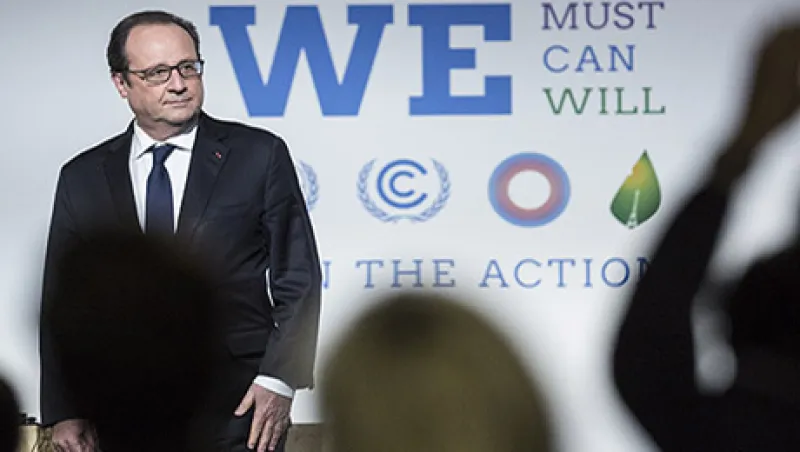Regardless of whether a legally binding agreement is reached, the Conference of the Parties’ U.N. Framework Convention on Climate Change (COP21), being held outside of Paris, has made clear that political leaders, businesses, investors and the broader public are embarking upon a transition to a low-carbon future, with the potential to significantly alter global investment strategy for decades to come.
The scale of this transition will be extraordinary. To stay under the 2-degree-Celsius climate change threshold, the global economy will need to reduce emissions per unit of gross domestic product by approximately 87 percent by 2050, and effectively decarbonize fully by 2070. These goals will mean an entire rethinking of energy systems, transportation infrastructure, urban design — and most important — the financial architecture that must underpin this entire transition.
For investors, climate change should be examined as both a risk as well as an opportunity. So far, much attention has been given to the former, and not enough to the latter. For example, the global divestment movement has done a remarkable job articulating the risks of stranded assets for investors, with more than $3.4 trillion so far having been committed to divest from fossil fuel companies. Nonetheless, insufficient consideration has been given to where this capital could be profitably reinvested to support climate change adaptation and mitigation. Investors should think holistically about how climate change and the low-carbon transition will present new opportunities for their portfolios.
First, climate change presents a new growth sector, specifically for emerging markets. The developing world is positioned to lead the transition to a low-carbon future. From 2014 to 2015, more than half of the world’s investment in clean energy came from emerging markets, according to Bloomberg New Energy Finance. China has added more renewable energy than the U.S., U.K. and France combined. At a time when the broader emerging-markets landscape is struggling and the costs of renewables are falling dramatically, the real asset opportunity for alternative energy in emerging markets is significant.
Second, the Paris summit will make clear that carbon pricing is a major part of the solution to climate change. Roughly one fourth of the world already has some type of carbon pricing. This proportion will only increase over time. How countries, cities and companies incorporate carbon pricing into their operations will have a significant impact on competitiveness and profitability.
Third, the interaction between public and private institutions will be a key element of climate change investing going forward. Public institutions — whether they be governmental or multilateral, such as the World Bank and the International Monetary Fund — will be important partners for private investors, as they will be a source of investments, risk mitigation, credit guarantees and regulatory framework for investment. Specifically, development banks — such as the U.K. Green Investment Bank and the Connecticut Green Bank — at a national and subnational scale will be especially significant institutions in the discussion over finance and climate change. Critically, investment firms that want to participate in the transition to a low-carbon future will need to understand how to partner well with public sector institutions.
Finally, there is a major financing gap for early-stage innovators in alternative energy. The Aligned Intermediary, announced October 20 by U.S. Secretary of State John Kerry, aims to provide institutional capital to early-stage ventures in clean energy, and Bill Gates announced early last week that, in concert with several other high-net-worth individuals such as Mark Zuckerberg and Jack Ma, there will be a major infusion of research capital into the burgeoning sector.
COP21 is an important turning point for the global economy and the financial markets that underpin it. Smart investors will not only examine the risks but also clearly appreciate the opportunities in this space, as our $100 trillion economy embarks upon a decarbonization trajectory over the next two generations.
Aniket Shah leads the financing initiative for the U.N. Sustainable Development Solutions Network in New York. He has been seconded from Investec Asset Management for 2015.
Get more on macro.






